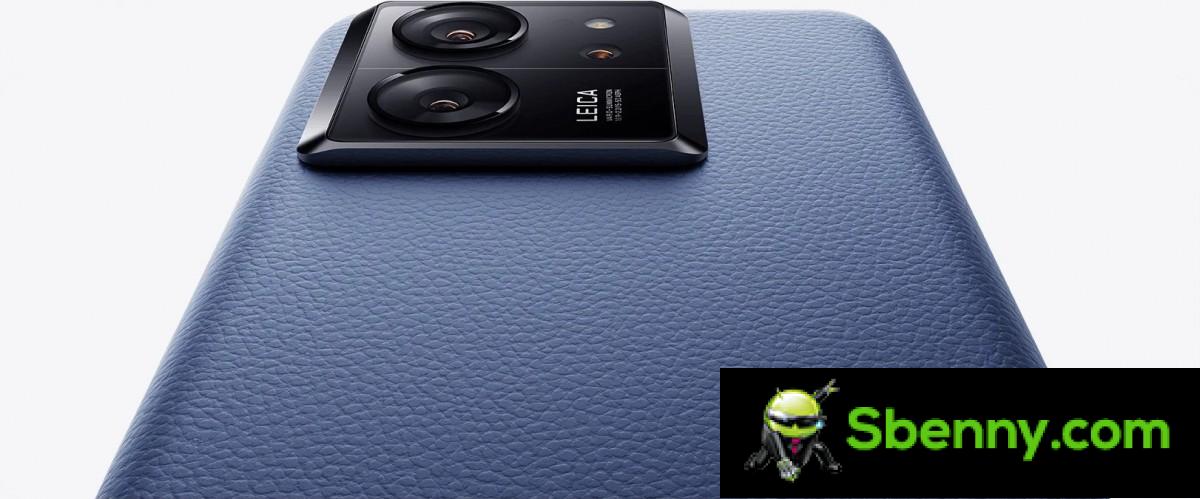The Xiaomi 13 series was strong from the start, but also expensive: global versions started at 1,000 euros for the Xiaomi 13 (8/256 GB) and 1,300 euros for the Xiaomi 13 Pro (12/256 GB). This week saw the launch of the 13T duo – the phones aren’t as powerful as the mainline 13 series, however they’re also a lot cheaper.



Xiaomi13T
The Xiaomi 13T costs €650 for an 8/256GB phone, the Xiaomi 13T Pro costs €800 for a unit with extra RAM and the same amount of storage, i.e. 12/256GB. So, both have lower MSRPs than their non-T brethren. The price of the older flagships has obviously dropped since launch, but not enough to close the gap with the T-phones.

With this in mind, let’s give a quick overview of what you’ll receive. For a more detailed look we will soon have a review of the Xiaomi 13T Pro, the review of the 13T will also follow soon. Both phones feature 6.67-inch 144Hz HDR displays with 1,220 x 2,712 px resolution, both with very high brightness (2,600 nits), and Gorilla Glass 5. Both phones are IP68 rated for dust and water resistance. waterfall.
They also share the same cameras, a 50 MP main (1/1.28″ sensor, 1.22 µm pixels, OIS), a 50 MP 50 mm portrait camera and a 12 MP ultra wide-angle camera, all with Leica-branded features.However, due to the different chipsets, there is a difference in video capabilities: the Pro model does 8K at 24fps and 4K at 60fps while the vanilla 13T model achieves 4K at 30fps.

By the way, the Xiaomi 13T has a Dimensity 9200+, a 4nm chipset, which competes with the Snapdragon 8+ Gen 1 if not even Gen 2. The vanilla model has the Dimensity 8200 Ultra. Both are 4nm chips from the fabs at TSMC, but the 9200+ has a definitive edge in terms of CPU and GPU performance.



Xiaomi 13T Pro
The only other notable difference between these two is in charging speed: both have 5,000 mAh batteries, but the Pro model goes up to 120W, while the 13T gets up to 67W max while charging. This makes it twice as slow to reach 100% charge (42 minutes compared to 19 minutes), although for some the difference in practice may be small.
What do you think of the Xiaomi 13T? Vote below, or you can scroll through some potential alternatives we’ve featured below.
What do you think of the Xiaomi 13T Pro? Is it better or worse than the vanilla 13T in terms of value for money?
The Galaxy S23 FE isn’t here yet, which leaves the Galaxy S23 and S23+ holding the lead – and both cost more than the 13T duo, even after months of price cuts. Keep in mind that Xiaomi promises to stick to Samsung’s update schedule: 4 operating system updates and 5 years of security patches. The S23 pair has the better chipset, but the screens have a lower resolution (FHD+), a lower refresh rate (120 Hz), dimmers (not that 1,750 nits is weak), and the batteries are much slower to charge.


Samsung Galaxy S23 • Samsung Galaxy S23+
The Nothing Phone (2) is powered by a Snapdragon 8+ Gen 1, so it’s competitive with the 13T Pro too. And it’s cheaper, you can get a 12/5212GB phone for less than a 12/256GB 13 Pro . The screen has a lower resolution (FHD+) and a lower refresh rate (120 Hz), but at least it’s an LTPO panel (brightness is 1,600 nits). This features a 50MP ultra-wide-angle camera, but lacks a telephoto lens of any kind. The battery is a little smaller than that of the Xiaomi (4,700 mAh) and wired charging is slower (45 W, full charge in 55 minutes), but wireless charging is also available (15 W, 130 minutes for full charge). However, the dust and water resistance rating is only IP54.
A Poco F5 Pro also has an 8+ Gen 1 chip and is even cheaper. The 6.67-inch display on this one has an adequate QHD+ resolution, beating all the models above. The refresh rate (120 Hz, LTPS) and brightness (1,400 nits) are lower, and the camera isn’t great with a basic 64MP main module, 8MP ultra-wide, and no telephoto lenses. The battery is slightly larger at 5,160 mAh and supports both 67W wired and 30W wireless charging, dust and water protection drops to IP53.


No Phone (2) • Xiaomi Poco F5 Pro
The Motorola Edge 40 Pro packs a Snapdragon 8 Gen 2 (the slowest variant, unlike the Galaxy) and is a little cheaper than the 13T Pro. It has a 6.67″ display at 165 Hz (FHD+ resolution, LTPS) and a more competitive camera than most of the phones listed above: 50MP main (1/1.55”, OIS), 50MP ultra-wide, and 12MP 2x tele, plus a 60MP selfie camera. The 4,600mAh battery boasts 125W wired charging (full in 23 minutes, so not as efficient as the 13T Pro’s) and 15W wireless charging. This at least has an adequate IP68 rating.
The iPhone 15 Plus still lives in a 60Hz world, but its 6.7-inch display is a little sharper than the Xiaomi 13T pair (though not as sharp as the Moto). The 2023 model comes with a 48MP main camera, the first in the family, however, as we found out, it does not replace a proper zoom lens.This phone is very, very expensive, it is the most expensive on this list without even taking into account the RAM and storage storage. That’s Apple for you. But with built-in USB-C, great software support, a great app and accessory ecosystem plus features like MagSafe (Qi 2 is coming to Androids soon), maybe it’s time to switch sides.


Motorola Edge 40 Pro • Apple iPhone 15 Plus







Start a new Thread